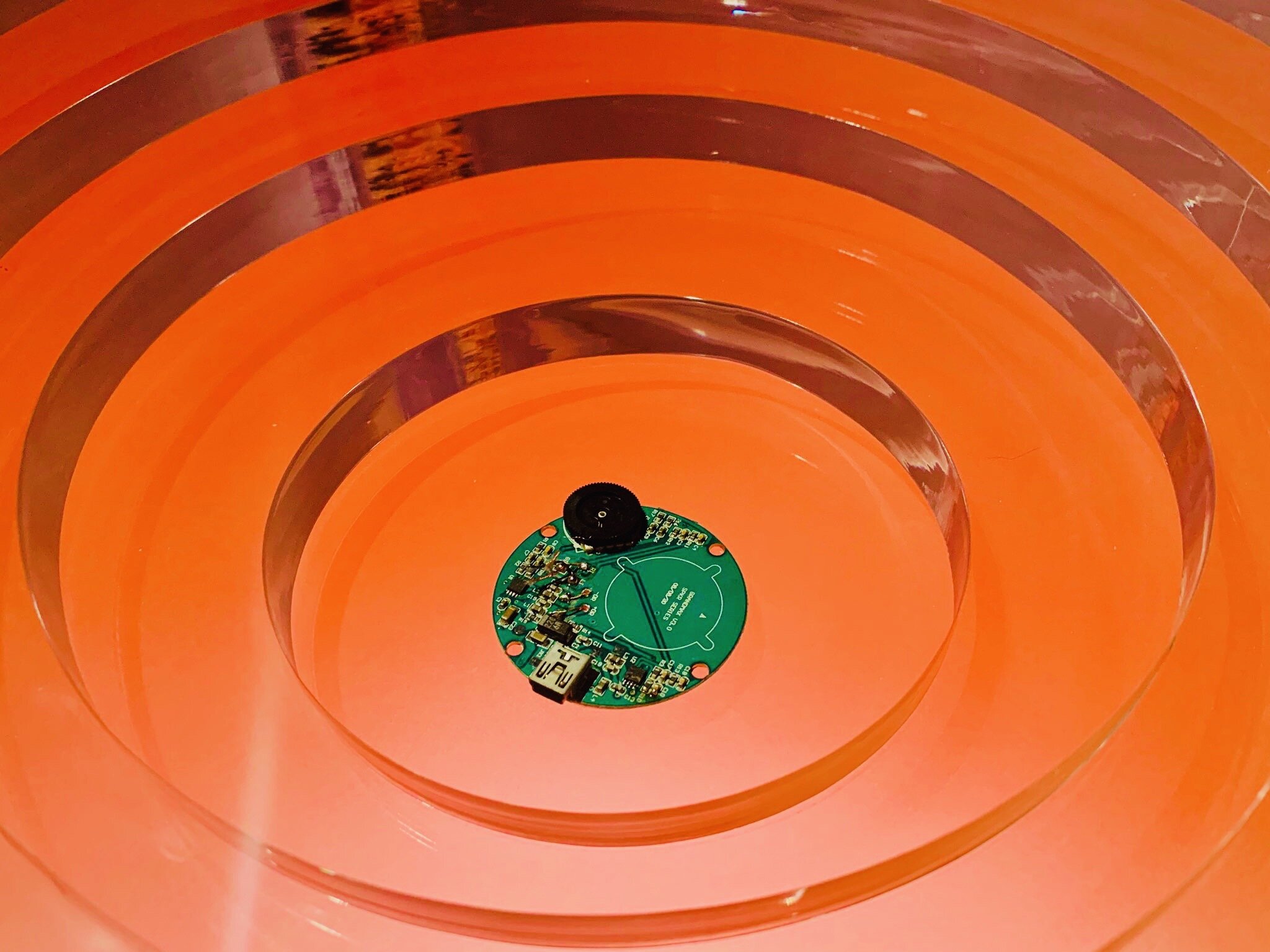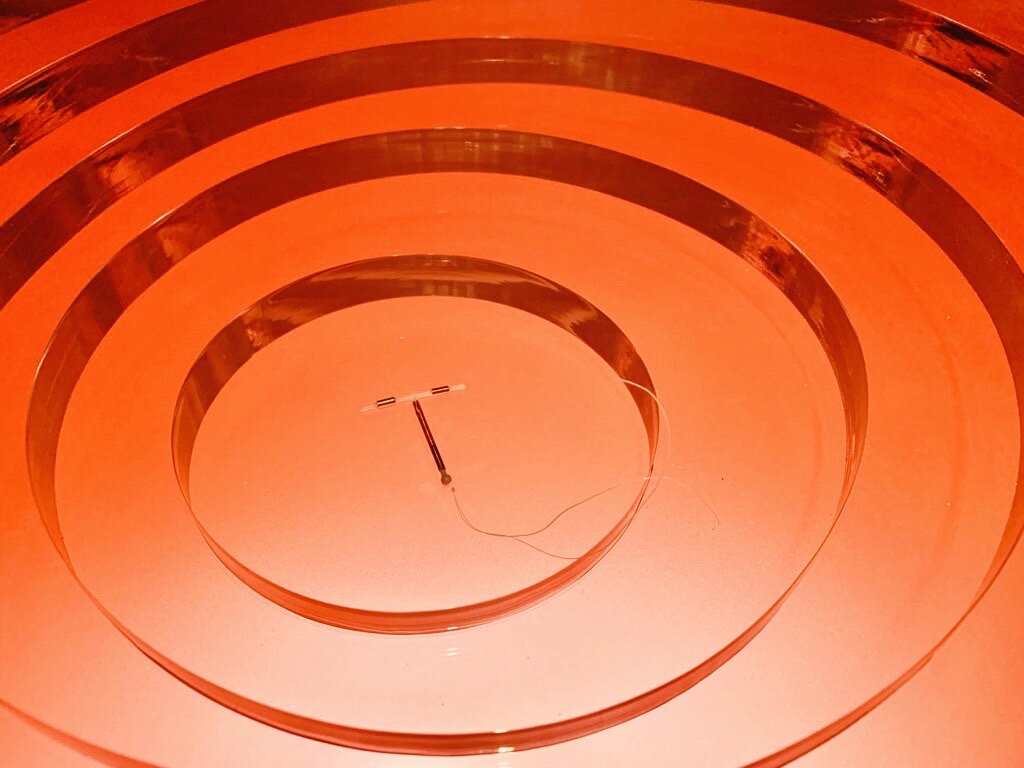In this installation on view at 21c Durham through 2022, artist Marisa Morán Jahn and architect Rafi Segal imagine that Aphrodite, the Greek goddess of love and copper, has bestowed us three “gifts” that extend our digital, corporeal and libidinal selves. Each gift is a different copper-based device used to regulate and enable desire from antiquity to the present: a contemporary IUD (intrauterine device) used by 170 million women across the world today, an ancient copper-based contraceptive device (“pessary”) from 400 BCE, and a motherboard, used in personal computers. Together, the three artifacts present a fascinating story of extimacy—the mediation of intimacy through technology— and the continuum between flesh and earth. Altogether these three gifts sensitize us to desire—and its regulation—as a way of knowing ourselves, each other, and our environs. Copper, then, is situated as a gift from the gods and yet already an element that lives with(in) us.
Context
Relatively abundant, conductive, and malleable, copper is a naturally-occurring element on which our homes, digital networks, and bodies depend. Etymologically, the word “copper” derives its name from the island of Cyprus (Latin, cuprum) where the metal was found in abundance and mined starting in 8700 BCE. Cyprus is also the birthplace of Aphrodite, which explains how copper and the goddess of love share the same symbol (♀) and perhaps suggesting a relationship of fecundity — both body and earth. In addition, in antiquity, polished copper or bronze was used as mirrors. While Aphrodite’s mirror is most commonly assumed to symbolize vanity, its ability to reflect also symbolizes a revelatory power and inner secret. The symbol was later adapted in the 1970s by Western activists to signify women’s liberation and empowerment.
The contemporary copper IUD on view, the Copper T Paraguard, is a long-lasting contraceptive device invented by Lazar C. Margulies and Margaret Sanger as a tool that would liberate and enable women’s pleasure. Despite its contentious usage during Cold War years to forcibly control the fertility of poor women of color in the U.S. and global South, many women in patriarchal societies around the world regard the IUD as a tool for reproductive self-determination. In 2016, IUD sales in the U.S. increased by 900% because it was recognized as a reproductive device that would outlast Trump’s presidency.
Like the IUD, the replica pessary made from bronze, a copper alloy, is a device inserted into the vagina to function as a spermicide. An artifact dating from 400 BCE, the pessary reminds us that the fulfillment of women’s desire in heterosexual relations past and present is enabled with access to reproductive technologies.
The final gift on view is a motherboard, the central circuitry of a computer whose passage of electrons relies on copper. Originally invented in 1981 by IBM, the motherboard unites “daughterboards” that extends it features. The motherboard points towards an era in which fertility, surrogacy, amorous engagements, and one’s “private, innermost” thoughts can now be technologically intermediated.
Altogether these three gifts sensitize us to desire — and its regulation — as a way of knowing ourselves, each other, and our environs. Copper, then, is situated as a gift from the gods and yet already an element that lives with(in) us.
This installation is one component of SNATCHural History of Copper, a larger body of work that began when Jahn discovered that her IUD is made from copper, prompting her to embark on a journey to trace “where the copper in my snatch comes from.”
Many thanks to Creative Capital, the Council of Arts at MIT, The New School Faculty Research Fund, and Dr. Cristina Matera, M.D.





